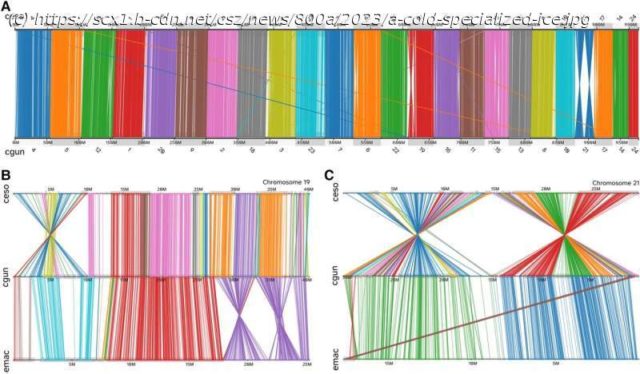Many animals have evolved to tolerate extreme environments, including being able to survive crushing pressures of ocean trenches, unforgiving heat of deserts, and limited oxygen high in the mountains. These animals are often highly specialized to live in these specific environments, limiting them from moving to new locations.
Many animals have evolved to tolerate extreme environments, including being able to survive crushing pressures of ocean trenches, unforgiving heat of deserts, and limited oxygen high in the mountains. These animals are often highly specialized to live in these specific environments, limiting them from moving to new locations.
Yet, there are rare examples of species that once lived in harsh environments but have since colonized more temperate settings. Angel Rivera-Colón, a former graduate student now postdoc in the lab of Julian Catchen (CIS/GNDP), an associate professor in the department of Evolution, Ecology, and Behavior at the University of Illinois Urbana-Champaign, explores the genetic mechanisms underlying this anomaly in Antarctic Notothenioid fish.
Antarctic notothenioids, or cryonotothenioids, have evolved to live in freezing waters around Antarctica, where most fish would otherwise freeze solid if exposed to such cold temperatures. However, cryonotothenioid fish are able to survive in these waters due to antifreeze glycoproteins they produce in their cells. The AGFPs bind to any ice crystals that form, preventing them from growing and the cells from freezing.
Antarctic icefishes, a family within cryonotothenioids, are even more specialized to live in the icy waters. Icefishes also are the only vertebrate that has adapted to live without hemoglobin in their blood cells, causing their cells and tissues to be translucent/white in color. Hemoglobin is a protein in blood cells that helps increase oxygen uptake and results in the red coloration of cells. Normally animals need hemoglobin to get enough oxygen, but in the cold, oxygen-rich waters around Antarctica, icefishes have developed morphological changes, such as bigger hearts for pumping blood, that they no longer need hemoglobin to get enough oxygen.
Despite this extreme specialization, one species of icefish called Champsocephalus esox, or the pike icefish, has escaped Antarctica and now lives in warmer, less oxygenated, South American waters.






